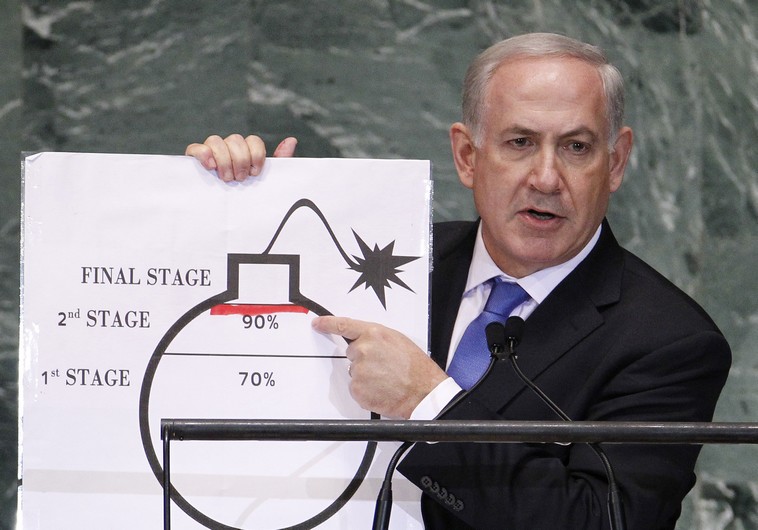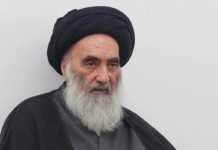Analysis/Iran, U.S. Are on the Warpath Again. This Time, Israel Has Little Say
عاموس هاريل/هآرتس: مرة أخرى إسرائيل وأميركا معاً على مسار الحرب ولكن هذه المرة لدى أسرائيل القليل لتقوله
Amos Harel/Haaretz/June 21/2019
For many Israeli ministers and generals, recent events echo the tense summers a decade ago. But there one major difference.
For government ministers and generals, graduates all of the tense summers of 2009-2013, the way things are developing this summer is beginning to elicit memories of things past, and not in a good way. Back then, in the days of Netanyahu’s second and third governments, the drama was consistently built up in the spring around the possibility that Israel would attack the nuclear sites in Iran. By the summer months the air was already thick with tension. And in the fall, once what the experts from abroad described as the window of opportunity for the air force had closed, the danger faded away as if of its own accord. The following year, as spring came, the song began all over again – until America got fed up. The two agreements they reached with the Iranians, the interim agreement in 2013 and the nuclear agreement in 2015, buried the Israeli attack plan.
In retrospect, it’s quite clear what has happened here. The fear of an uncoordinated Israeli attack on Iran spurred President Barack Obama’s administration to apply crushing sanctions, which brought the Iranian economy to its knees and ultimately enabled the signing of the full agreement. In the agreement, despite its flaws, Israeli intelligence identified a major opportunity to distance the nuclear threat for at least a decade. Netanyahu thought differently, and took advantage of Donald Trump’s victory in the presidential election to push for America’s withdrawal from the agreement in May of last year.
What we’ve been seeing in the Persian Gulf during the past two months is a direct continuation of that same plot. The Trump administration, with encouragement from Israel (a bit more quietly of late), is renewing and even exacerbating the sanctions. Iran is getting pushed into a corner and now, in the shadow of the crisis that is liable to destroy its economy again, it is trying to reshuffle the cards. This is the backdrop to the recent series of attacks on oil tankers and sites in the Gulf, which intelligence organizations in the West and in Israel are attributing with a high degree of certainty to Iran’s Revolutionary Guards.
Iran is also taking defensive steps. On Thursday before dawn it shot down a giant, $130-million American unmanned aerial vehicle, which it says was gathering intelligence over its territory. (The Americans say it had not entered Iranian airspace.) At the same time, Iran is warning that it is about to violate the nuclear agreement in the near future, as it approaches the permitted threshold of accumulation of uranium at a low level of enrichment. On Thursday, Russian President Vladimir Putin warned against “catastrophic consequences” if Washington responds with force against Iran. The results of escalation can’t be predicted.
The difference between this summer and the summer seasons of the beginning of the decade is that this time things do not really depend on Israel. The United States, by means of its withdrawal from the agreement, the presentation of Secretary of State Mike Pompeo’s 12-point plan against Iran, and the imposition of sanctions on companies from third countries that trade with it has created a new regional reality. It’s doubtful that Trump himself wants a war with Iran. At the beginning of this week he described the attacks on the tankers as “very minor,” then on Thursday he delivered, as is his wont, a series of contradictory, confusing responses to the drone incident. However, the dynamic of escalation does not necessarily depend on what the sides want. And there are elements in the administration, first and foremost National Security Adviser John Bolton, who have in the past advocated regime change by force.
On the backdrop of all this, the Pentagon’s weakness is evident. The last defense secretary, James Mattis, resigned last December because of continuing disagreements with the president that reached their peak in Trump’s intention (which hasn’t been fully implemented) to withdraw the remaining American troops from Syria. This week his acting replacement had to resign because of the revelation of an old affair of violence in his family.
It isn’t the generals who dictate policy in Washington. The problem is that it isn’t clear who actually does dictate it and whether that person knows what he wants to achieve. Thus far, the Iranian attacks have been aimed at the oil industry in the Gulf. The government of Israel is aware of the possibility that Tehran will initiate a provocation on one of the borders in the north, with the aim of dragging Israel into the crisis and forcing the Americans to act. Such a development is not a certainty, but rather a possibility perceived as realistic and one that necessitates Israeli alertness. Israeli-Iranian friction in the north is nothing new. It has been going on indirectly for years, by means of Hezbollah and in the past two years it has been exacerbated in the wake of Israeli bombardments of Iranian bases and Shi’ite militias in Syria.
According to the intelligence analyses, Iran is not looking for a war with the United States, which it knows it would lose. However, continuation of the existing situation is intolerable from its perspective. The attacks, for which it has not taken responsibility (on the contrary, Tehran denies any connection to them) were aimed at enabling a way out of the existing situation. The immediate Iranian concern has to do with oil. The exacerbation of the sanctions have impeded a large part of the Iranian oil trade. The Americans also took other measures that interfere with Iran transferring oil in the context of barter commerce, for example to the Houthi rebels they operate in Yemen.
Tehran has warned in the past of its ability to damage the oil tanker routes. The series of attacks in the Gulf was aimed at signaling that if Iran is unable to profit from its oil, the other large producers in the region (most of them Washington’s allies) will not be able to do so either. At the same time, the attacks are intended to influence oil prices, because of the uncertainty and because of the need for higher insurance premiums. In the meantime, this hasn’t happened.
The latest attack on tankers, a week ago, was partially documented by the Americans. The crew of a Revolutionary Guard boat was filmed removing an unexploded mine from one of the tankers, in what appears to have been an attempt to conceal evidence. The incident occurred precisely as Japanese Prime Minister Shinzo Abe was visiting Tehran in an attempt to cool down tempers in the Gulf. At the moment it appears that his mission has failed.
Foreign Policy magazine commented this week that this isn’t the first time the Iranians have responded with intentional escalation aimed at repelling external pressure they see as intolerable. This happened in the past in the “tanker war” with the Americans in the Gulf at the end of the 1980s and also when Iran chose to help the Shi’ite militias that were fighting the American occupation in Iraq after the toppling of Saddam Hussein’s regime in 2003.
In light of the economic pressure, Iran is applying counter-pressure, in the hope of easing the economic blockade – and perhaps gain an advantage when negotiations resume. The frequent incidents hint at the amount of damage Iran is able to cause, exposes American sensitivity surrounding the oil industry and poses a question about Trump’s willingness to continue with the tough line towards Iran.






















